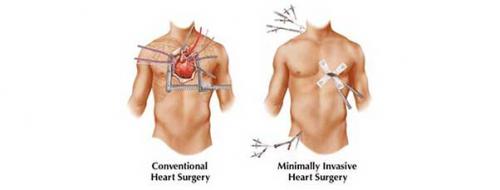How to manage Heart Arrhythmia?

Article
The management for rightly helping the patient to deal with the problem of heart arrhythmia is to first acknowledge its type and the underlying cause of this medical problem. As per the pacing of the heartbeat, the heart arrhythmia can be categorized into bradycardia and tachycardia whereas the former is the result of slow heartbeats the latter is caused by an increase in the rate of heartbeat. Cardiologists call a heart arrhythmia as fibrillation when the rate of heartbeat is not regular, on the other hand, premature contraction is the medical term for an early heartbeat. The detailed diagnosis plays a crucial role in determining the mode of treatment for managing the impact and extent of heart arrhythmia on the patient. An interesting fact about arrhythmia is the necessity for a plan of treatment only when the condition is posing a serious health threat to the patient. Or else the condition can be left untreated if it has no potentiality of making the patient vulnerable towards any risk of health problem.
Primarily, diagnosis of the problem showcases the type of heart arrhythmia which provides a strong background for the manifestation of the likewise course of treatment. Doctors from the field state that in case of the patient suffering from bradycardia, it is important to evaluate the underlying reason. As soon as it is discovered, doctors can work upon eliminating the very cause. As it has been reported in many cases of cardiovascular problems, it is often not possible to exactly locate the causes, in case of a patient who is suffering from bradycardia and the reason is not accurately known, cardiologists advise implanting a pacemaker to set up the normal heartbeat in the patient. The implantation of a pacemaker which uses electrical impulses for inducing a normal heartbeat rate, it is a surgical procedure which facilitates the set-up of this medical device either under the skin of the chest or abdomen.
The types of treatments for tachycardia differ from those of bradycardia. The abnormal pace up in the rate of the heartbeat can be a stressful episode for the patient. The primary concern of the doctors is to eliminate the pain, for this medications and drugs are provided which ease the patient, even though they cannot eliminate the cause, but they are effective with their role. Physical therapies and exercises are recommended which can be helpful to stimulate the normal minimum heartbeat rate. Medication can also be provided as part of the cardioversion which has the option of electric shock to prompt a healthy rate of heartbeat. Especially, vagal maneuvers are alternative physical movements which can particularly discontinue the fast heartbeat which has its origin above the lower half of the heart. If these techniques do not prove to be effective, there are a variety of surgical procedures both minor and major for treating a fast heartbeat. On the similar lines of a pacemaker, an implantable cardioverter-defibrillator abbreviated as ICD can be surgically implanted near the left collarbone to assess the tachycardia. In addition to that, an ICD is also responsible for inducing an optimal rate of heartbeat. For eliminating the cause of this problem, ablation therapy can be taken into consideration which includes the use of catheters to be inserted inside the blood vessels of the inner heart to eliminate fast heartbeat causing tissues. A blocking technique if properly brought into action, it can stimulate a normal heartbeat. Cardiologists have implemented this technique through maze procedure where many surgical incisions are marked in the heart, first, they are scars but soon it results into healing. The healed tissues deter the movement of electric impulses which were causing fast heartbeat in the first place. If the diagnosis reports an aneurysm as an underlying cause of tachycardia, a ventricular aneurysm surgery is performed to eliminate an aneurysm from the heart. Heart surgeons perform a coronary bypass surgery to enhance the supply of the blood to the heart by opening the narrowed blood vessels.
Conclusion
Dr. Ashish Agarwal, an experienced heart arrhythmia specialist in India states that there are various coherent treatments available at the best heart hospital in India for providing the best invasive cardiology in India. Being a senior professional from the expert team of invasive cardiology doctors in Delhi, he adds in that early diagnosis and timely medical service can be greatly helpful to the patient.
Post Your Ad Here

Comments